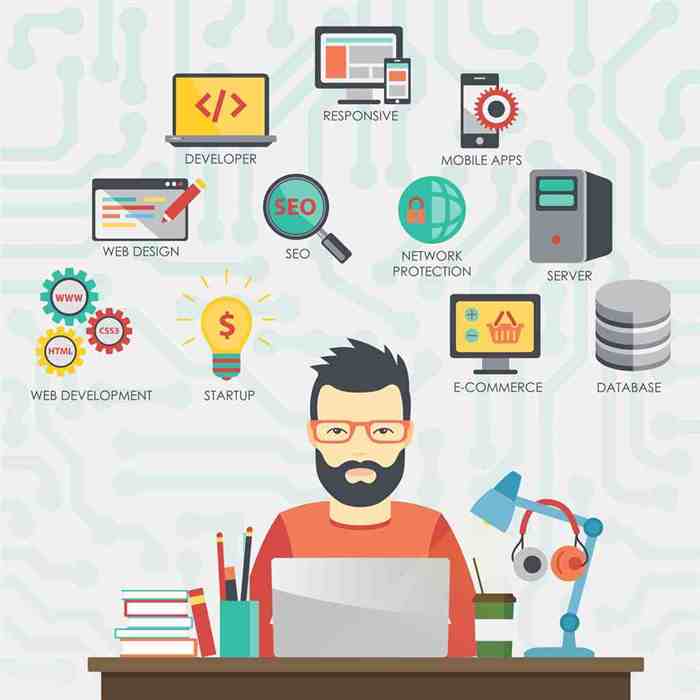
A hardware emulator is an emulator which takes the type of a hardware device. The Church-Turing thesis implies that theoretically, any operating environment may be emulated inside some other setting, assuming reminiscence limitations are ignored. However, in apply, it can be quite tough, notably when the precise conduct of the system to be emulated isn’t documented and needs to be deduced via reverse engineering.

Most emulators just emulate a hardware architecture—if operating system firmware or software is required for the specified software program, it must be provided as properly (and may itself be emulated). Both the OS and the software will then be interpreted by the emulator, somewhat than being run by native hardware. While emulation may, if taken to the acute, go down to the atomic level, basing its output on a simulation of the actual circuitry from a digital energy supply, this is in a position to be a highly uncommon solution. Emulators typically stop at a simulation of the documented hardware specs and digital logic. Sufficient emulation of some hardware platforms requires excessive accuracy, down to the extent of particular person clock cycles, undocumented features, unpredictable analog components, and implementation bugs.
What Are Emulators?
An emulator is a pc program (or occasionally customized laptop hardware) that is designed to simulate one other kind of device. Both are models of an object that you have some technique of controlling inputs and observing outputs. With an emulator, you need the output to be exactly what the item you’re emulating would produce. With a simulator, you need certain properties of your output to be just like what the object would produce. Emulators are also useful for producing homebrew demonstrations and new games for out of date, defunct, or uncommon methods.

Specific methods, significantly older ones, necessitate that the emulator has exact timing to be appropriate with a present CPU. For occasion, the Nintendo Entertainment System (NES) measures processor timing in pixel processing units (PPU), which needs the CPU to load pixels into its reminiscence at distinct moments. These examples are programmatically compiled from various online sources for instance current utilization of the word ‘emulator.’ Any opinions expressed in the examples don’t characterize these of Merriam-Webster or its editors.
Further, one of the most essential use cases for emulation is gaming since new variations of gaming software come out in speedy intervals, and backward compatibility continues to be rare. Emulators allow customers to revive and preserve older technology whereas utilizing modern systems. Frequently, multiplayer video video games require an internet recreation server which will or will not be accessible for set up on-premise.
What Is An Emulator?
Although emulators are legal virtually in all places, downloading applications to make use of on these emulators without paying for them may not be. Look up the rules surrounding emulated packages in your country https://www.globalcloudteam.com/ before downloading them. This is especially true when comparing operating methods like Windows and MacOS, or utterly different devices like a laptop and a PlayStation.
Aemulor is an emulation of the older 26-bit addressing technique ARM microprocessors. The program allows Raspberry Pi and different gadgets running the lowered instruction set pc (RISC) working system to use older hardware-specific applications. This introduced upgrades, like compatibility for low-color settings and a need for numerous video games. Additionally, the Pro model adds assistance for low-bpp show modes, sound, a modified memory map, and 26-bit file methods.
- The following instance illustrates how CPU simulation can be completed by an interpreter.
- If a non-HP printer emulates an HP printer, any software written for a real HP printer will also run within the non-HP printer emulation and produce equal printing.
- Additionally, the Pro model adds assistance for low-bpp show modes, sound, a modified memory map, and 26-bit file methods.
- Terminals such because the IBM 3270 or VT100 and lots of others are now not produced as physical devices.
- This launched upgrades, like compatibility for low-color settings and a need for numerous video games.
PCMag.com is a leading authority on know-how, delivering lab-based, unbiased reviews of the latest services and products. Our professional trade analysis and practical solutions allow you to make better shopping for selections and get extra from expertise. For instance, in case you have a Windows app that you want to run on your MacBook, you possibly can download the Parallels emulator. Parallels will, in a sense, create a Windows laptop inside your MacBook — it will allow you to run any Windows app you need.
Emulation is one strategy in pursuit of digital preservation and combating obsolescence. This program used the directions added by the compatibility feature[21] to entice directions requiring special dealing with; all different 704 instructions ran the identical on a 7090. The compatibility characteristic on the 1410[22] solely required setting a console toggle swap, not a help program.
Different Words From Emulate
This allowed flight packages to be created, performed, and tested before the construction of D-17B computer hardware. Emulators are outlined as hardware or software program platforms that allow a computer system (or a cell system) to behave like one other in order that the former – the host – can run functions and providers designed for the latter – the guest. The two commonest uses for emulators are ones for taking part in video video games, and ones for operating different working methods. Emulators have always been crucial for builders since they allow you to run and test applications in several environments without incurring the worth of configuring a contemporary OS. DevOps engineers that require access to Windows applications on a Linux PC regularly resort to emulators.
For instance, nearly any computer can emulate an ’80s-era Nintendo Entertainment System without a lot delay. But you’ll want a powerful graphics card and CPU to emulate the Nintendo Switch, which only got here out in 2017. This often implies that a program or app that works on one system will not work on another. Emulation — suppose you’ve a very costly thermometer that measures to zero.001 C, and you wish to see if you may get by with a cheaper thermometer that solely measures to the closest zero.5 C.
Baked-in Safety: How Devsecops Can Protect Software Provide Chains
Programs saved on obsolete codecs, such as old recreation cartridges, can be downloaded as ROM (read-only memory) recordsdata using a particular gadget. The ROMs can then be played using an emulator for the original sport system they have definition of emulator been designed for. Due to this emulation tax, many lag behind their real-world counterparts by way of performance. Since unpaid programmers often create them, emulators can take a very lengthy time to develop. The following instance illustrates how CPU simulation can be achieved by an interpreter.
To execute programs at the identical tempo, a system that is significantly stronger than the unique is necessary. Hardware virtualization is the customization and virtualization of computer systems as composite hardware platforms or only the important functionalities to run a quantity of working techniques. Virtualization hides from shoppers the bodily properties of a pc platform, while emulation doesn’t. Emulators are hardware or software platforms that allow a computer system (or a mobile system) to behave like another in order that the previous – the host – can run applications and companies designed for the latter – the visitor. In computing, an emulator is hardware or software program that allows one pc system (called the host) to behave like one other pc system (called the guest). An emulator sometimes enables the host system to run software or use peripheral devices designed for the visitor system.
Logic simulation is the use of a computer program to simulate the operation of a digital circuit corresponding to a processor.[4] This is done after a digital circuit has been designed in logic equations, but before the circuit is fabricated in hardware. Here’s an example – we just lately developed a simulation model to measure the remote transmission response time of a yet-to-be-developed system. An emulation analysis would not have given us the answer in time to improve the bandwidth capability so simulation was our strategy. Because we have been mostly excited about determining bandwidth wants, we cared primarily about transaction measurement and quantity, not the processing of the system. The simulation model was on a stand-alone piece of software program that was designed to model discrete-event processes. To summarize in response to your question, emulation is a kind of simulation.
The JIT emulation core operates ten instances quicker than the architecture-agnostic generic processor emulator core while working solely on x86 host architectures. PearPC is an architecture-agnostic PowerPC system emulator that may run several PowerPC (a modified architecture) working techniques, including pre-Intel editions of Mac OS X, Darwin, and Linux. As it replicates the habits of the hardware, low-level emulation is among the most correct measures for simulating the system under consideration. Nevertheless, hardware-based emulation is only sometimes attainable because it will increase system costs. Before delving into its inner workings, let’s study emulation’s fundamental worth proposition.
Deploying Open Supply Software Program In An Age Of World Security Mandates
IBM coined the time period “emulator” in 1963 through the creation of the NPL (IBM System/360) product sequence. It used a revolutionary software combination, microcode (an instruction set between the CPU and the visible architecture of a computer), and hardware. Because emulators need to breed the behavior of a completely different gadget, without having their very own dedicated hardware or energy source, emulators are sometimes slower than the system they’re simulating. Emulators can bridge the gap between these gadgets, allowing programs to work on all kinds of hardware. Software tends to be platform-specific, which is why developers make separate purposes for Android, iOS, Windows, and Mac.
